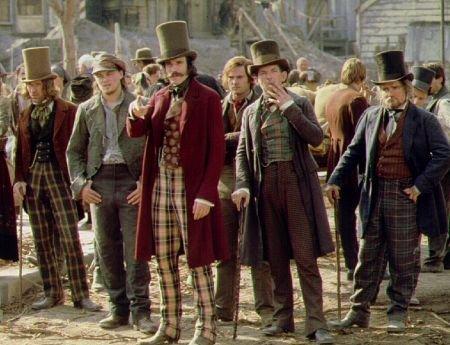| Academy Award Nominations: |
| Best Picture |
| Best Director: Martin Scorsese |
| Best Actor: Daniel Day-Lewis |
| Best Original Screenplay: Jay Cocks, Steven Zaillian, and Kenneth Lonergan |
| Best Cinematography: Michael Ballhaus |
| Best Art Direction: Dante Ferretti; Francesca Lo Schiavo |
| Best Costume Design: Sandy Powell |
| Best Film Editing: Thelma Schoonmaker |
| Best Original Song: "The Hands that Built America" |
| Best Sound: Tom Fleischman, Eugene Gearty, and Ivan Sharrock |
|
| Golden Globe Nominations and Winners: |
| Best Picture (Drama) |
| ★ | Best Director: Martin Scorsese |
| Best Actor (Drama): Daniel Day-Lewis |
| Best Supporting Actress: Cameron Diaz |
| ★ | Best Original Song: "The Hands that Built America" |
|
| Other Awards: |
| Screen Actors Guild Awards: Best Actor (Day-Lewis) |
| New York Film Critics Circle: Best Actor (Day-Lewis) |
| Los Angeles Film Critics Association: Best Actor (Day-Lewis; tie); Best Art Direction |
| British Academy Awards (BAFTAs): Best Actor (Day-Lewis) |
| Satellite Awards: Best Actor, Drama (Day-Lewis); Best Art Direction; Best Film Editing |

